Introduction
In the realm of modern medicine, innovation continues to push the boundaries of what we can achieve in terms of healing and recovery. One such innovation that has garnered attention in recent years is radial shockwave therapy (1 & 6). Originally developed to treat kidney stones, this non-invasive technique has found its way into various fields, including orthopaedics, sports medicine, and rehabilitation. In this blog post, we delve into the effectiveness of radial shockwave therapy, exploring its mechanisms, applications, and outcomes (1-6).
Understanding Radial Shockwave Therapy
Radial shockwave therapy involves the delivery of high-energy acoustic waves to targeted areas of the body (ref 1-5). These waves are generated by a device and transmitted through a handheld applicator to the skin surface (ref 1-5). Unlike focused shockwave therapy, which concentrates energy at a specific point, radial shockwave therapy disperses energy radially, affecting a broader area (ref 2-4).
Mechanisms of Action
The therapeutic effects of radial shockwave therapy are multifaceted. One primary mechanism is its ability to stimulate tissue repair and regeneration. By inducing controlled microtrauma at the cellular level, shockwaves prompt the release of growth factors and cytokines, initiating the body’s natural healing processes. Additionally, shockwaves have been shown to disrupt pain signalling pathways, leading to pain relief and improved function in treated areas. Furthermore, this therapy has anti-inflammatory effects, reducing swelling and promoting tissue recovery (ref 1 & 5).
Applications in Rehabilitation and Orthopaedics
Radial shockwave therapy has demonstrated efficacy in treating a variety of musculoskeletal conditions. It is commonly used to address tendinopathies such as Plantar Fasciitis, Achilles Tendinopathy, and Tennis Elbow. By stimulating collagen production and remodelling damaged tissue, shockwave therapy facilitates tendon healing and regeneration (ref 1, 2 & 5). Radial Shockwave has also shown promising results in managing chronic conditions like Osteoarthritis, Carpal Tunnel and Calcific Tendinopathy providing symptomatic relief and improving joint function (ref 1-4).
In the realm of rehabilitation, radial shockwave therapy plays a valuable role in accelerating recovery from sports injuries and trauma. Athletes suffering from muscle strains, ligament injuries, or stress fractures can benefit from the regenerative effects of shockwave therapy, allowing for a quicker return to play. Additionally, this treatment modality is increasingly utilised in post-operative rehabilitation protocols to enhance tissue healing and optimise functional outcomes (ref 2).
Clinical Evidence and Outcomes
Numerous clinical studies have investigated the effectiveness of radial shockwave therapy across various medical disciplines. While results may vary depending on the condition being treated and individual patient factors, overall, the evidence supports its efficacy as a safe and viable treatment option (ref 1 & 5). Meta-analyses and systematic reviews have consistently demonstrated favourable outcomes, including pain reduction, improved mobility, patient satisfaction and physiological tissue enhancement (ref 1-5).
The non-invasive nature of radial shockwave therapy makes it an attractive alternative to surgical interventions for many patients. With minimal risk of complications and no downtime associated with treatment, individuals can undergo therapy without disrupting their daily activities or livelihoods (ref 1-5).
Conclusion
Radial shockwave therapy represents a groundbreaking approach to musculoskeletal care, offering patients a non-invasive, evidence-based treatment option for various conditions. By harnessing the regenerative and analgesic properties of acoustic waves, this therapy promotes tissue healing, reduces pain, and enhances functional outcomes. As research continues to elucidate its mechanisms and refine treatment protocols, radial shockwave therapy is poised to become an indispensable tool in the arsenal of healthcare providers worldwide, revolutionising the way we approach rehabilitation and orthopaedic care.
Author – Chris Hedges, Sports Lead in East Anglia at Pure Physio Sports
References
- Al-Abbad H. et al. (2020) The effects of shockwave therapy on musculoskeletal conditions based on changes in imaging: a systematic review and meta-analysis with meta-regression. BMC Musculoskelet Disord 21, 275 https://doi.org/10.1186/s12891-020-03270-w
- Chun-De L. Jau-Yih T. Hung-Chou C. Tsan-Hon C (2018) Efficacy of Extracorporeal Shock Wave Therapy for Lower-Limb Tendinopathy: A Meta-analysis of Randomized Controlled Trials. American Journal of Physical Medicine & Rehabilitation 97(9):p 605-619, DOI: 10.1097/PHM.0000000000000925
- Xie Y. Zhang C. Liang B. Wang J. Wang L. Wan T. Xu F. & Lei L. (2022) Effects of shock wave therapy in patients with carpal tunnel syndrome: a systematic review and meta-analysis, Disability and Rehabilitation, 44:2, 177-188, DOI: 10.1080/09638288.2020.1762769
- Ammendolia A. Marotta N. Demeco A. Marinaro C. Moggio L. Barletta M. Costantino C. (2020) Effectiveness of Radial Shockwave Therapy in Calcific and Non-Calcific Tendinopathy of the Shoulder: a Systematic Review and Meta-Analysis. Muscles, Ligaments & Tendons Journal (MLTJ).1;10(1).
- Mazin Y. Lemos C. Paiva C. Oliveira L. Borges A. Lopes T. Borges Sr A. Lopes T. (2023) The Role of Extracorporeal Shock Wave Therapy in the Treatment of Muscle Injuries: A Systematic Review. Cureus. Aug 27;15(8).Chang K-V. Chen S-Y. Chen W-S. Tu Y-K. Chien K-L. (2012) Comparative Effectiveness of Focused Shock Wave Therapy of Different Intensity Levels and Radial Shock Wave Therapy for Treating Plantar Fasciitis: A Systematic Review and Network Meta-Analysis,
-
Archives of Physical Medicine and Rehabilitation, Volume 93, Issue 7, Pages 1259-1268, ISSN 0003-9993, https://doi.org/10.1016/j.apmr.2012.02.023.
- Sukhon T. (2018) Effects of Radial Shockwave Therapy for Reducing Lower Back Pain Caused by Chronic Muscle Strain. Sci Tech Asia, 23(3):52-60. Available from: https://ph02.tcithaijo.org/index.php/SciTechAsia/article/view/147236







